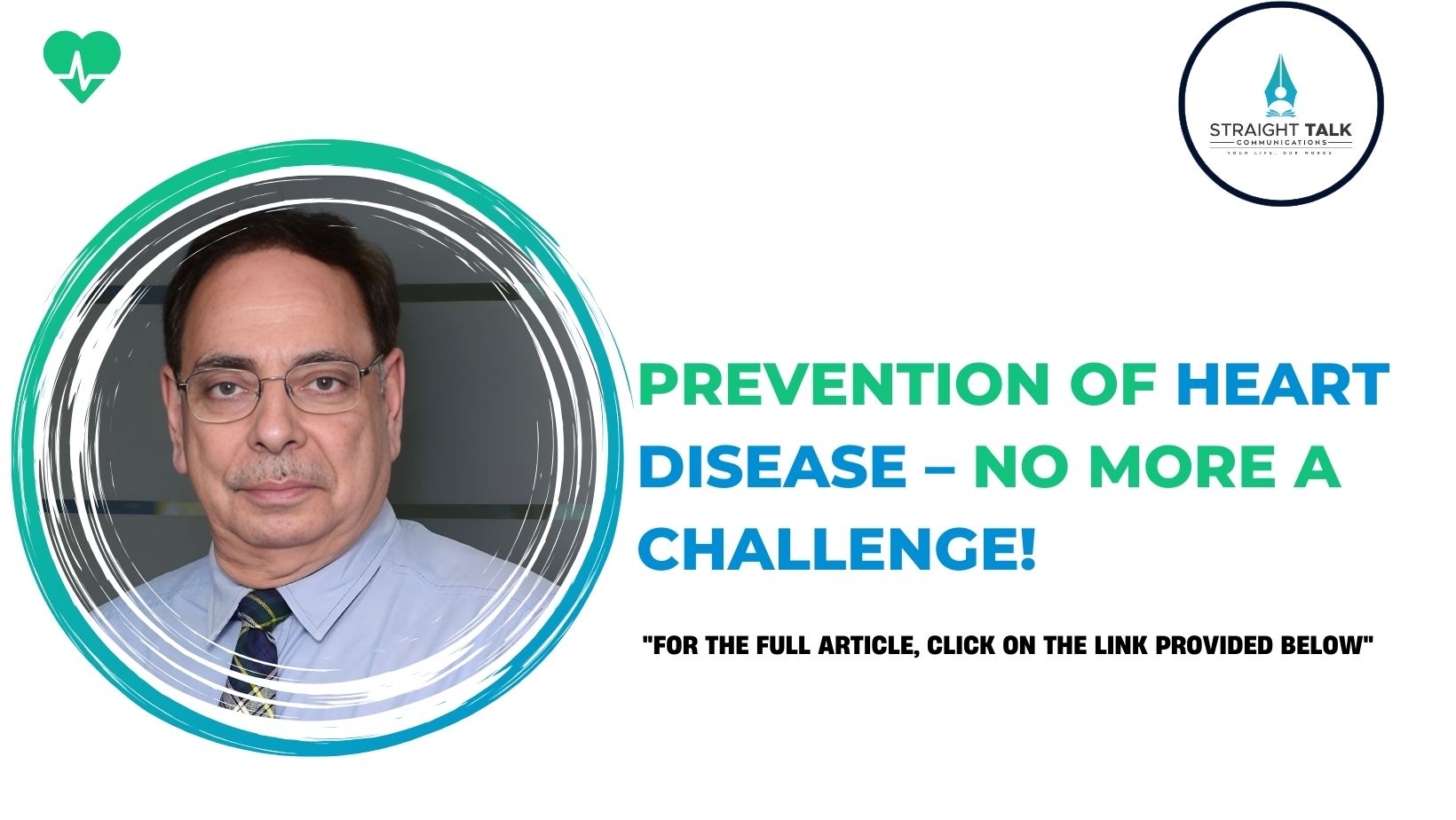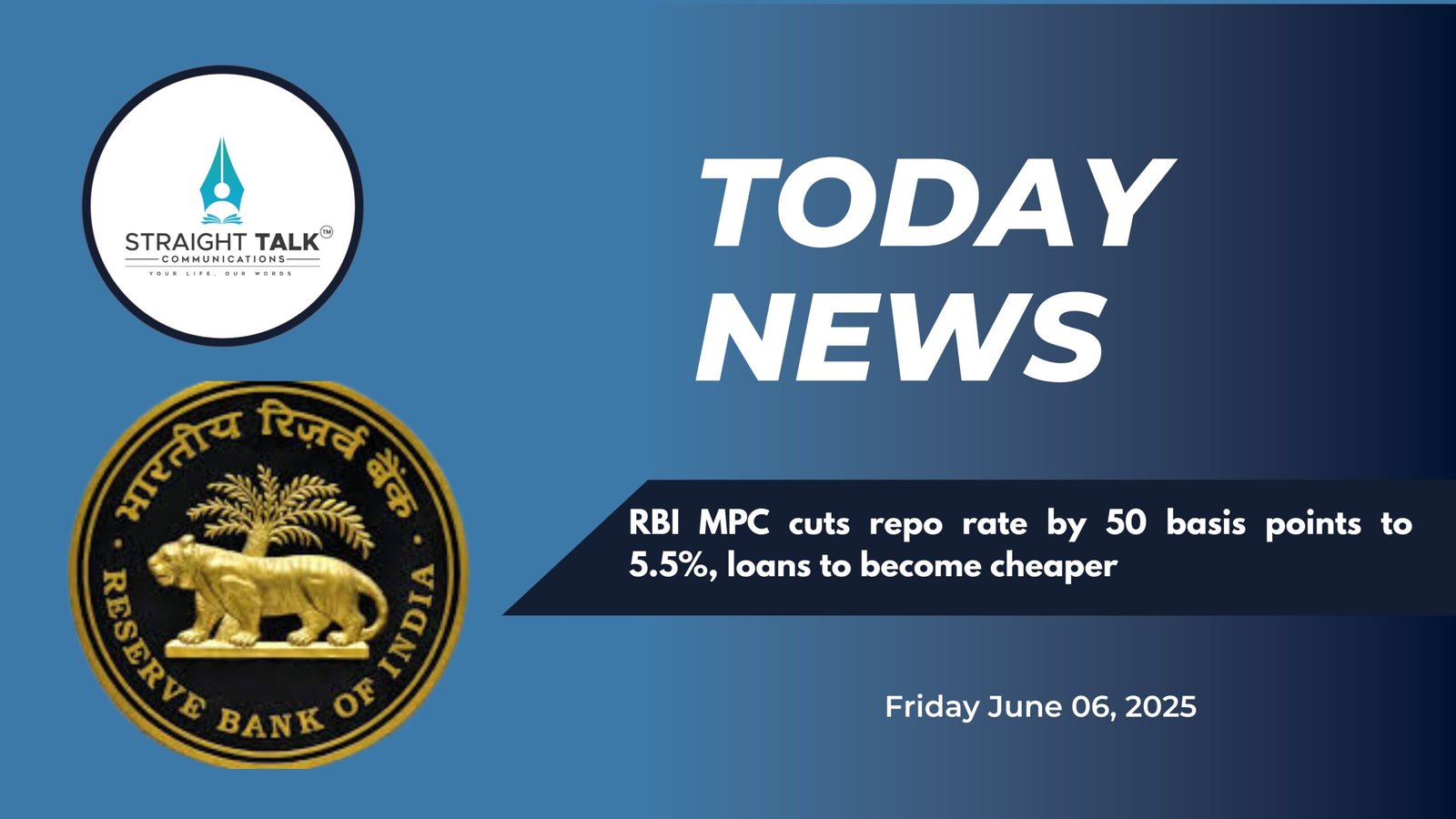Prevention of Heart Disease – No More a Challenge!

Prof Upendra Kaul
Heart disease is one of the commonest causes of death, disability and hours at work lost in most communities. Recent trends indicate that the disease has escalated to younger populations also. It is one of 5 top causes of death in Indian population including both men and women in rural and urban population. The current prevalence rates urban India are 2 to 4% and in rural India around 1 to 2%. An estimate of about 35 .8 million people with coronary heart disease out of a total estimated population of 1.38 billion .
This is an alarming data. It is thus very important to understand the risk factors which are responsible for the problem. INTERHEART, a very important international study, reported in 2000 that nine risk factors could explain the causation of heart attacks in 90 per cent instances. Thirty percent patients included in this study were from south Asian countries. The risk factors can be divided into 2 categories.
Adverse Risk factors: Current smoking, High blood pressure, High levels of bad cholesterol (elevated LDL cholesterol), Diabetes mellitus ,Abdominal obesity and Psycho-social stress
Protective Risk factors Daily consumption of fruits and vegetables ,Regular exercise and Alcohol intake in moderation . Alcohol however has not been seen giving protection to South Asian population besides its vices.
Globally, all 9 risk factors were very significantly associated with heart attacks except alcohol, which had only a modest statistical significance. These risks were consistent in all regions, ethnic groups, and in men and women worldwide.
The strongest risk predictor globally is high bad cholesterol levels. followed by current smoking (associated with a 4-fold and 3-fold increased risk of heart attack respectively). The risk associated with lipids and smoking was particularly marked in the young (Below 55 years in age in men and below 65 years in women) versus the old.
FACTS TO BE REMEMBERED TO REDUCE RISK OF HEART ATTACKS AND RELATED PROBLEMS
Current smoking
Smoking over 20 cigarettes or bidis per day increase the risk of heart attack by 5 times, 10 to 19 cigarettes or bidis increases the risk by 3 times and smoking less than 5 cigarettes or bidis per day increases the risk by 1.5 times. Smoking one cigarette shortens life by 11 minutes and people exposed to second hand smoke have 90 per cent excessive rate of heat attacks. Quitting smoking at any age nullifies this risk in 3 years. It is never too late to give up. Reducing smoking to minimum also helps.
What is normal Blood Pressure?
Optimal BP is a pressure less than 120/80 mms Hg. Any rise in BP above 110/75 mms is associated with a linear increase in stroke and heart attack rates. This has been proven by several epidemiologic studies and life insurance statistics. An increase of 10 mms in the systolic or diastolic pressure is associated with doubling of the risk of a vascular event. Unfortunately, high BP is invariably not accompanied by symptoms and therefore its detection and management is a challenge. It has been described by some as a “Silent Killer”.
Indications for taking BP-Lowering Drugs
Ideal Blood pressure at all ages should be below 120/80. In general, medicines are recommended when BP is more than 140/85 mms Hg. In some situations, medicines are recommended even at levels of 130/80 mms Hg. These situations are: Patients with diabetes, patients with kidney disease and high blood urea and creatinine and patients with pre-existing heart disease or stroke.
Non Drug Methods reduce BP by 10 to 15 mms Hg: These measures are Regular exercise, Salt intake of not more than 4 to 5 grams per day, Fresh fruits and leafy vegetables (4 to 5 servings/day) ,Avoidance of alcohol or drinking in moderation., Losing weight.
High Levels of Blood cholesterol:
High levels of bad cholesterol and low levels of good cholesterol promote heart disease. One per cent reduction in cholesterol leads to two per cent reduction in heart attacks. Low levels of good cholesterol (HDL cholesterol) are associated with a higher chance of getting a heart attack. Forty per cent of south Asians have it. The levels of less than 40 mgs in men and 50 mgs in women are defined as low. Decreasing LDL cholesterol and increasing HDL cholesterol reduces this heightened risk. A one mg increase in HDL cholesterol is associated with 6 per cent reduction in dying from a heart attack.
Methods to increase HDL cholesterol and reducing LDL cholesterol are regular exercise, weight reduction, increase in consumption of Omega 3 fatty acids (olive oil, mustard oil, almonds, walnuts, cold water fish like salmon, trout etc).
High risk individuals with multiple risk factors and even modestly raised levels of LDL cholesterol need in addition the statin group of drugs (simvastatin, atorvastatin or rosuvastatin). These tablets should be taken under medical supervision and once required, need to be continued for long term
Psycho-social stress
Stress is an important risk factor. It leads to increased secretion of adrenaline, chronic stress raises the blood pressure, invites diabetes and constricts the arteries of heart. Stress management programs comprising breathing exercises, stretching exercises, yoga, meditation and massage have been found to be useful in alleviating stress. These are approaches that aim at blunting the adrenalin response to stress. These relaxing techniques have the added advantage of being very safe. The high-risk population will benefit the most.
Exercise is one of the most useful methods of reducing chronic stress and in addition, has the advantage of directly reducing the chance of a heart attack and controlling obesity. This coupled with eating a heart-healthy diet rich in fruits and vegetables, low in salt content is a very good adjunct.
PREVENTIVE HEART CHECKS
One of the ways to recognize and thus to take preventive measures by “Preventive Health Checks” in population more than 35 years of age periodically. This consists of getting a routine blood biochemistry which includes, hemoglobin and blood counts, Blood sugars, Lipid profile, kidney and liver function tests. Measurement of Blood pressure, body mass index to to look for obesity an electrocardiogram (ECG), Exercise ECG, Echo cardiography etc. A doctor then examines and counsels the person depending upon the abnormalities found. An early detection leads to early counselling and treatment. This goes a long way in preventing Heart Attacks, Strokes, chronic kidney diseases and complications because of them. We at Gauri Heart Centre have this program and have placed it at a modest cost.
(The author, popularly known as Dr. U Kaul, is Founder Director Gauri Kaul Foundation)







